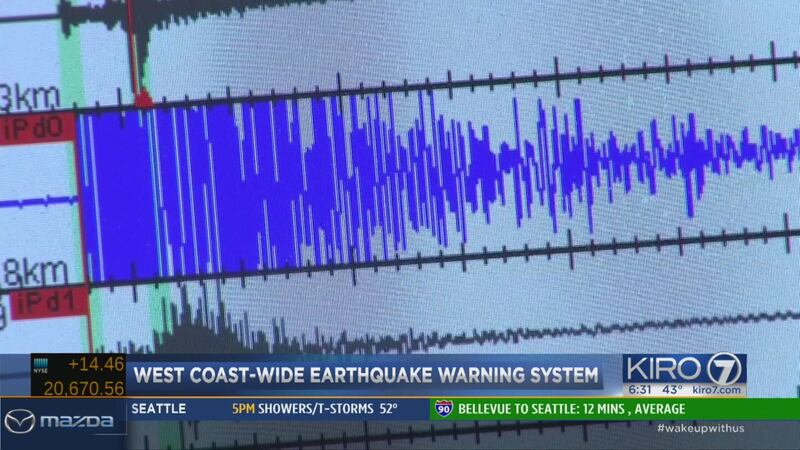SEATTLE — Researchers at the University of Washington unveiled a first-of-its kind West Coast system of earthquake alerts.
ShakeAlert works by sensing initial seismic waves of an earthquake and then transmitting that through a network now shared by operators in Washington, Oregon and California.
The system will send out loud audio warnings that the ground will begin shaking within seconds or minutes, depending on how they are from the epicenter.
They're hoping the system can develop to a point where even in the middle of shaking, it can slow light rail trains down to protect riders and the system.
The USGS and universities held an event Monday to highlight the latest advances in the system at the University of Washington.
The system could warn people about 8 to 10 seconds before shaking begins.
But state seismologists say we are still years away from the system being available to the general public.
The USGS says even a few seconds can give enough time for taking cover, slowing trains, stopping elevators and opening doors at the nearest floor, or automatically stopping critical processes to prevent or limit damage.
The eventual hope is that through future development, the system could warn people on their phones 10 to 20 seconds ahead of shaking, giving valuable time to duck and cover and be integrated with transit as well.
A company in Bothell will be the first in the state to start using the ShakeAlert system. RH2 Engineering, which designs water and sewage systems for municipalities, will be using ShakeAlert to give workers a heads up on when to shut down valves before the ground starts shaking.
"This system potentially allows us to harden those facilities after an earthquake so they are available for firefighting purpose and drinking water usage for long term," said Dan Ervin with RH2.
The ShakeAlert system is being co-developed with public and private partners that include the University of Washington and Central Washington University.
State seismologists say they still need millions in federal funding to make this program accessible to the general public.
This includes connecting ShakeAlert to every cellphone user and wiring public transit.
The USGS estimates it will cost $38.3 million to complete the ShakeAlert system on the West Coast to the point that it will be able to issue public alerts, and $16.1 million each year to operate and maintain it.
Want to talk about the news of the day? Join the conversation on this story and read trending headlines on the KIRO 7 News Facebook page. Follow @KIRO7Seattle here.
Cox Media Group








